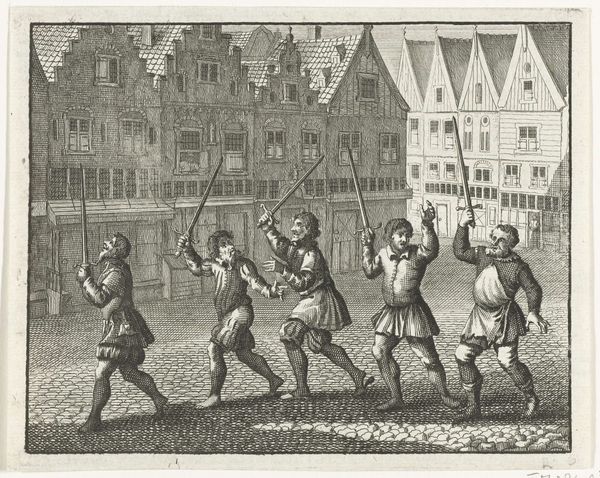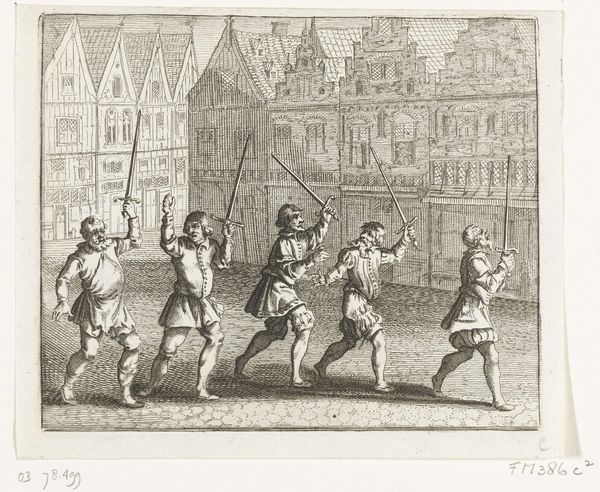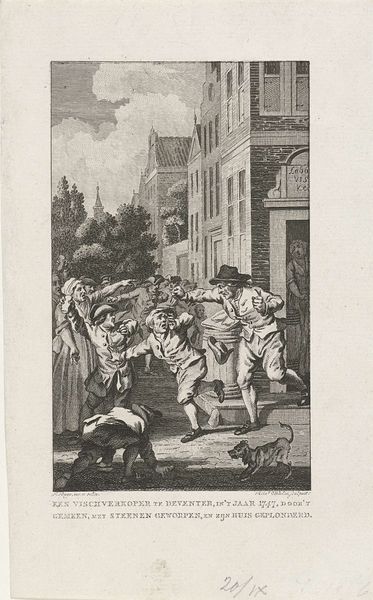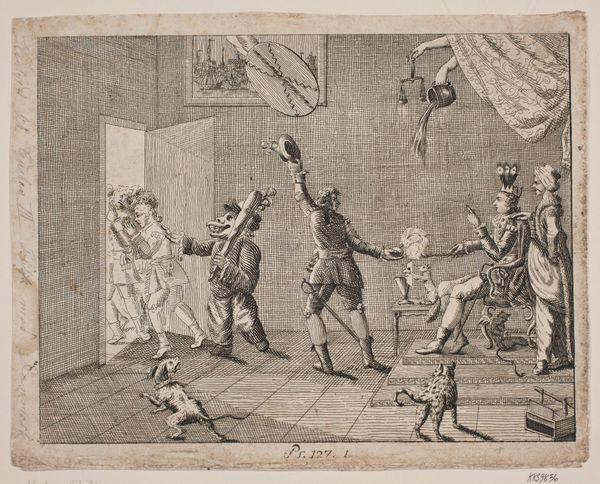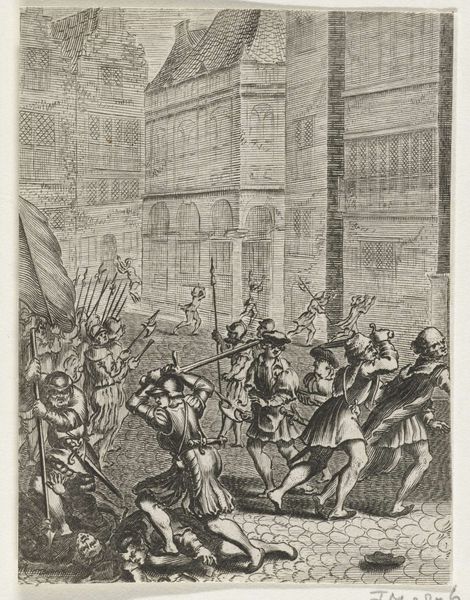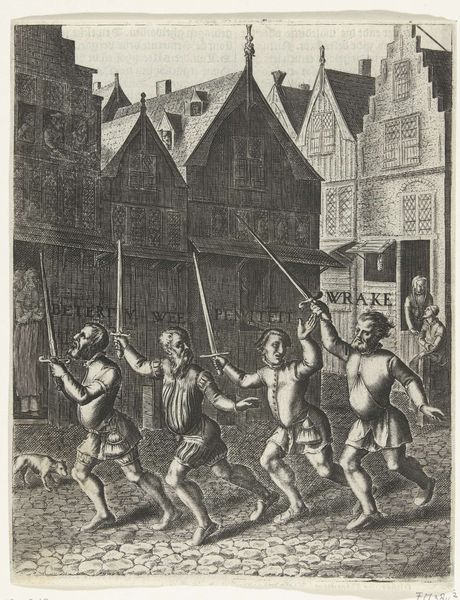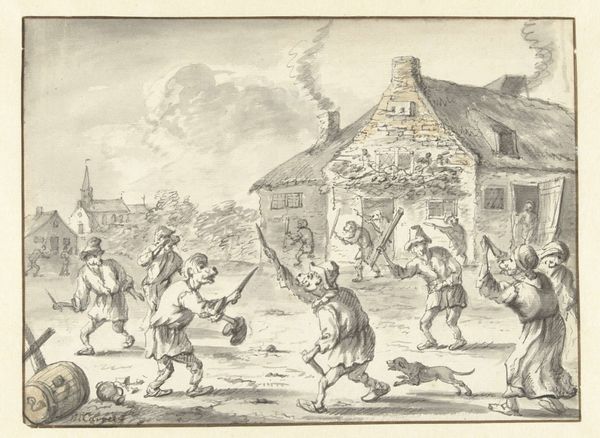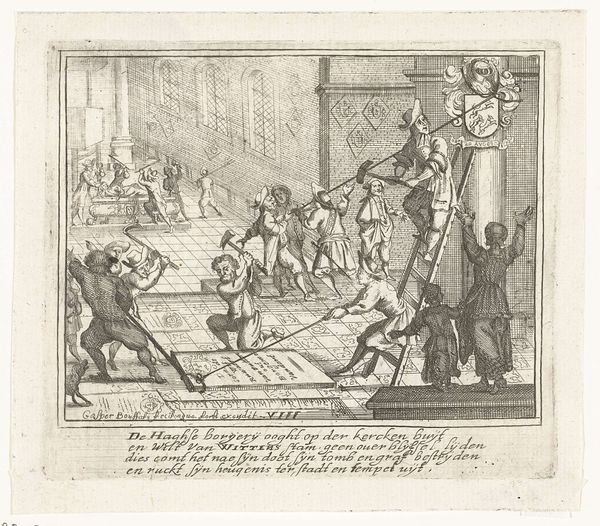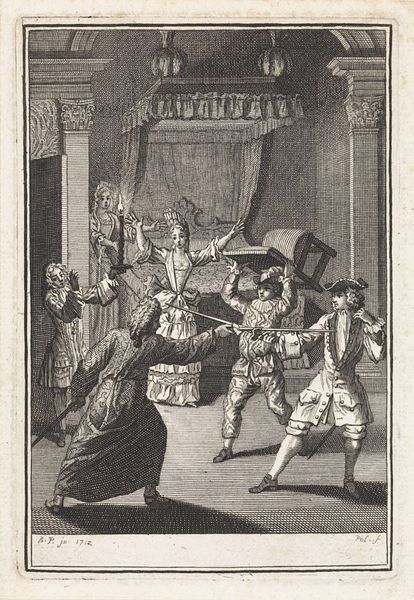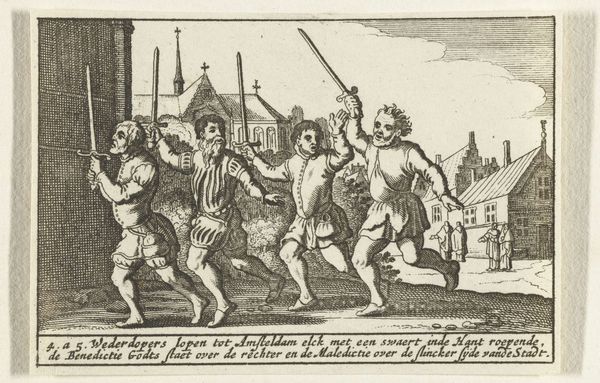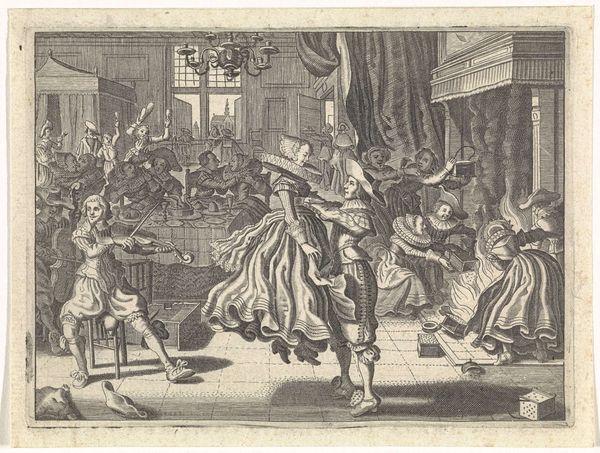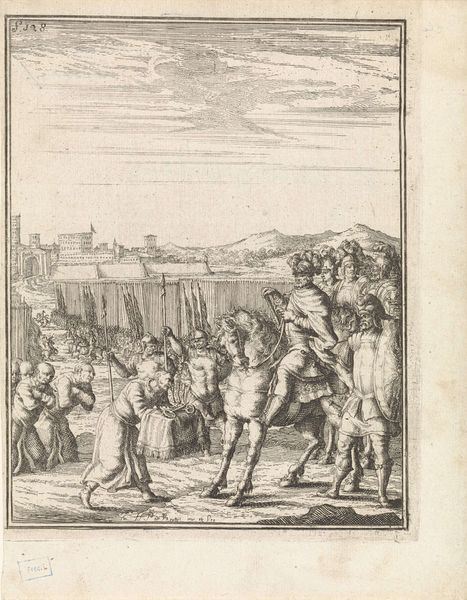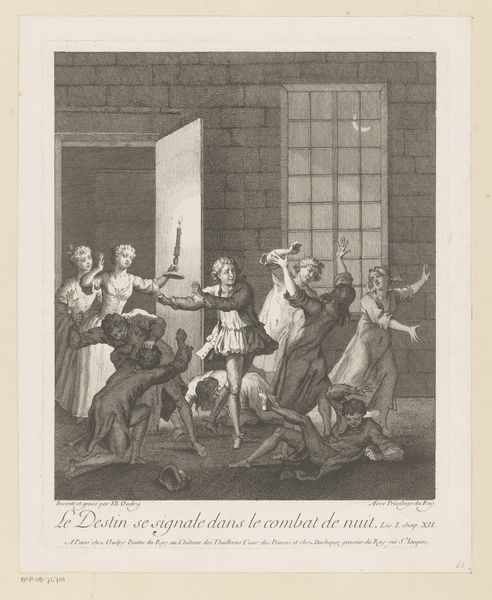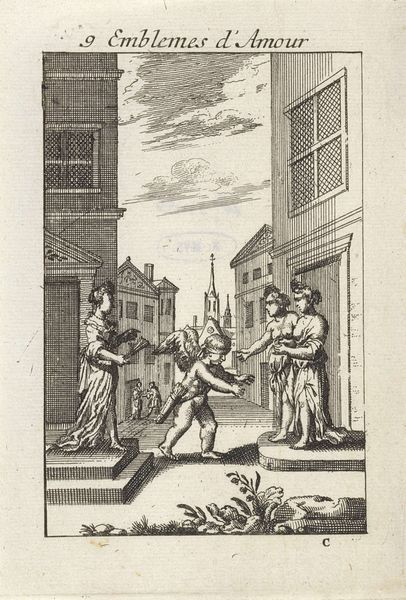
drawing, print, etching, engraving
#
drawing
#
narrative-art
#
baroque
#
dutch-golden-age
# print
#
etching
#
figuration
#
line
#
cityscape
#
genre-painting
#
engraving
#
realism
Dimensions: height 111 mm, width 79 mm
Copyright: Rijks Museum: Open Domain
Curator: This engraving is called "Zwaardlopers te Amsterdam, 1534" (Swordsmen in Amsterdam, 1534), although it was actually created between 1657 and 1659. Editor: It looks like madness frozen in time! Four figures brandishing swords stride maniacally through a narrow street. The crisp line work gives a slightly unsettling quality to the architecture around them. Curator: The piece offers a fascinating glimpse into the tumultuous religious climate of the Dutch Golden Age. This print is considered narrative art and captures a scene of Anabaptists, also known as Mennonites, engaging in radical and controversial behavior. Editor: Knowing it's an etching changes how I see the execution of the piece, specifically because of the density of labour. The medium would imply that this image would be replicated and distributed for an audience. Who made this print, and how would people interpret the image they consumed? Curator: Its origins are anonymous. It shows a time when religious reformers challenged established societal norms, but the intent of the imagery may very well be for satirical, propagandist reasons against the Anabaptist. Prints like these held a unique role to comment, to critique, and potentially fuel intolerance towards Anabaptists during the Dutch Golden Age. Editor: That changes my whole view. Suddenly, the focus is not so much on their mania, but on the judgment leveled against these people, likely circulated and reproduced for quick, anti-radical sentiments. And it makes you wonder about the sword, about the act of making art: a weapon of discourse. Curator: It brings forth the intersection of faith, power, and the very public role art can play in shaping public perception. It highlights how deeply intertwined visual representation can be with broader historical narratives and cultural biases. Editor: Ultimately, it speaks volumes about how the act of art making implicates the viewer just as much as the historical subject, inviting you to reflect on what it means to perpetuate images.
Comments
No comments
Be the first to comment and join the conversation on the ultimate creative platform.
